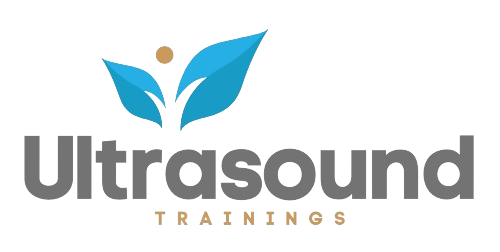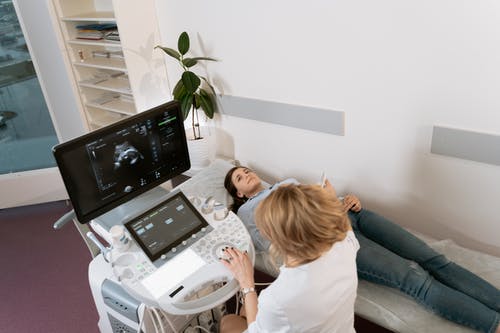Are you considering a career in ultrasound technology? Whether you’re looking to become a sonographer, ultrasound technician, or simply enhance your healthcare skills, ultrasound training can open up a world of opportunities in the ever-growing medical field. Before you dive in, it’s important to understand the prerequisites, what to expect during your training, and how to prepare for success. At Ultrasound Trainings, we offer comprehensive ultrasound training programs designed to equip you with the skills and knowledge needed to excel in this rewarding profession.
Here’s a guide to help you get started on your ultrasound training journey.
1. Understand the Prerequisites
Before enrolling in an ultrasound training program, it’s important to know the basic requirements. While some programs are open to individuals with no prior healthcare experience, others may require certain qualifications.
Basic Educational Requirements:
- High School Diploma or GED: Most ultrasound training programs require a high school diploma or equivalent. It’s important to have a solid foundation in subjects like math, biology, and anatomy, as these will be crucial during your training.
- Postsecondary Education: Some programs may prefer or require applicants to have completed postsecondary coursework in healthcare-related fields. For example, an associate’s degree in radiologic technology, nursing, or another medical field could make you a more competitive candidate for admission.
Basic Skills:
- Attention to Detail: Ultrasound technology requires precision and accuracy. You’ll need to be able to pay attention to details and make informed decisions based on the images you capture.
- Good Communication Skills: You’ll work closely with patients and other healthcare professionals, so excellent communication skills are a must. Being able to explain procedures, ease patient concerns, and work collaboratively is key.
- Physical Stamina: Ultrasound technicians often spend long hours on their feet, moving equipment and positioning patients, so physical stamina and comfort with the demands of the job are important.
2. What to Expect During Ultrasound Training
Ultrasound training is a dynamic and hands-on experience that will prepare you for a successful career in medical imaging. Here’s what you can expect during your ultrasound training:
Classroom Instruction: During the first part of your ultrasound training, you’ll attend classroom-based lessons that cover essential topics like:
- Anatomy and Physiology: Understanding the human body’s structures is crucial for interpreting ultrasound images correctly.
- Ultrasound Physics: Learn the science behind sound waves, how ultrasound technology works, and the principles of imaging.
- Medical Terminology: Familiarize yourself with the terms and language used in healthcare to ensure effective communication in clinical settings.
- Patient Care: Understanding patient interaction, safety, and comfort is an integral part of your training.
Hands-On Training: Ultrasound is a highly practical skill, so expect to spend a significant amount of time in clinical settings, practicing your skills on real patients under the supervision of experienced instructors. You’ll learn to operate ultrasound machines, perform scans, and interpret images in various specializations, including:
- Abdominal ultrasound
- Obstetric and gynecological ultrasound
- Cardiac ultrasound (echocardiography)
- Musculoskeletal ultrasound
- Vascular ultrasound
Supervised Clinical Hours: Ultrasound training programs require a certain number of supervised clinical hours to ensure you gain the necessary practical experience. These hours allow you to work in real-world healthcare settings, interact with patients, and get hands-on experience with ultrasound equipment. This is where you’ll solidify your technical skills and build confidence in performing scans independently.
Specializations: Many ultrasound programs allow you to specialize in different areas, such as:
- Obstetric Ultrasound: Focusing on prenatal imaging.
- Cardiac Ultrasound (Echocardiography): Specializing in heart imaging.
- Vascular Ultrasound: Focusing on blood vessels and circulation.
- Musculoskeletal Ultrasound: Imaging muscles, tendons, and joints.
3. Certification and Licensing Requirements
Once you complete your ultrasound training, you may need to obtain certification or licensure to work in your field. While certification requirements vary by location, most employers prefer or require ultrasound technicians to be certified.
Certification:
- American Registry for Diagnostic Medical Sonography (ARDMS): One of the most widely recognized certifications for ultrasound professionals in the U.S. To become certified, you’ll need to pass exams that test your knowledge and skills in specific ultrasound areas.
- Other Certifications: Depending on your area of specialization, there are additional certifications available, such as in cardiac sonography or vascular sonography.
State Licensing: Some states require ultrasound technicians to be licensed. Be sure to check the requirements in the state where you plan to practice. Most state licensing processes require proof of education, training, and certification before you can begin working.
4. Preparing for Ultrasound Training
To ensure you’re fully prepared for your ultrasound training program, there are several steps you can take before you begin:
1. Research Different Programs: There are many ultrasound training programs available, ranging from community colleges to specialized ultrasound institutes. Research programs to find one that meets your goals, offers strong clinical opportunities, and provides the certification you need.
2. Brush Up on Science Basics: Ultrasound technology involves understanding complex concepts in anatomy, physiology, and physics. Review any relevant coursework from high school or college to ensure you’re prepared for the academic part of your training.
3. Organize Your Finances: Some ultrasound programs can be costly, especially those offered at private institutions. Make sure you understand the cost of your program, available financial aid, and scholarship opportunities. Planning ahead can help ensure you’re financially ready to start your training.
4. Be Ready for a Commitment: Ultrasound training programs can last anywhere from 18 months to two years, depending on the program’s intensity and the level of certification. Make sure you’re prepared for the commitment of time, energy, and focus required to successfully complete the program.
5. Get Practical Experience (If Possible): Before starting formal ultrasound training, if you have the opportunity, consider gaining experience in a healthcare environment. Working as a medical assistant or volunteering in a hospital can give you exposure to medical terminology and patient care, which will help you during your ultrasound training.
5. Career Opportunities After Ultrasound Training
After completing ultrasound training and obtaining certification, a wide range of job opportunities await you. Ultrasound professionals can work in hospitals, outpatient clinics, private practices, diagnostic imaging centers, and even in-home healthcare. Specializing in specific areas such as obstetrics, cardiology, or musculoskeletal imaging can provide additional career growth and earning potential.
Starting your ultrasound training is an exciting step toward a rewarding career in healthcare. Whether you’re transitioning into a new field or looking to add valuable skills to your current healthcare role, ultrasound training can offer a wide range of benefits. By understanding the prerequisites, what to expect during your training, and how to prepare for success, you’ll be well on your way to becoming a skilled and certified ultrasound professional.
At Ultrasound Trainings, we’re committed to providing comprehensive ultrasound training programs designed to set you up for success. Contact us today to learn more about our courses and take the first step toward a fulfilling career in ultrasound technology!


